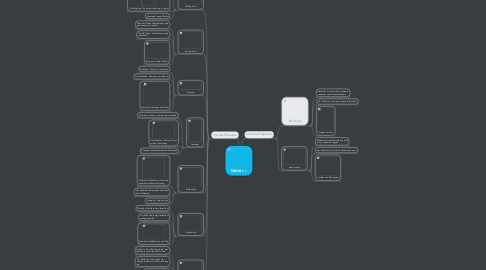
1. Physical Properties
1.1. Melting Point
1.1.1. Definition: Substance that goes from a solid to a liquid.
1.1.2. Our Definition: The object melts into a liquid.
1.1.3. Examples: Ice and Butter
1.2. Boiling Point
1.2.1. Definition: When the substance gets warm enough to bubble.
1.2.2. Our Definition: The substance gets really warm.
1.2.3. Examples: Water and Oil
1.3. Density
1.3.1. Definition: Purity of a substance.
1.3.2. Our Definition: How pure an object is.
1.3.3. Examples: Hydrogen and Gold
1.4. Hardness
1.4.1. Definition: Ability to scratch other materials.
1.4.2. Our Definition: How well it can scratch other things.
1.4.3. Examples: Stainless Steel and Diamonds
1.5. Malleability
1.5.1. Definition: Ability for a solid to be hammered without shattering.
1.5.2. Our Definition: Being able to flex and mold differently.
1.5.3. Examples: Gold and Iron
1.6. Conductivity
1.6.1. Definition: Ability to have heat flow.
1.6.2. Our Definition: Being capable of making heat flow.
1.6.3. Examples: Metal Spoon and Pots
1.7. Viscosity
1.7.1. Definition: Fluid that resists the force tending to cause the fluid to flow.
1.7.2. Our Definition: Takes longer for objects to become of how thick they are.
1.7.3. Examples: Honey and Jam
2. Chemical Properties
2.1. Reactivity
2.1.1. Definition: How readily a substance combines chemically with others.
2.1.2. Our Definition: How well it reacts with others.
2.1.3. Oxygen and Iron
2.2. Flammability
2.2.1. Definition: A material with an ability to burn well with oxygen.
2.2.2. Our Definition: How well something can burn.
2.2.3. Candles and Newspaper

